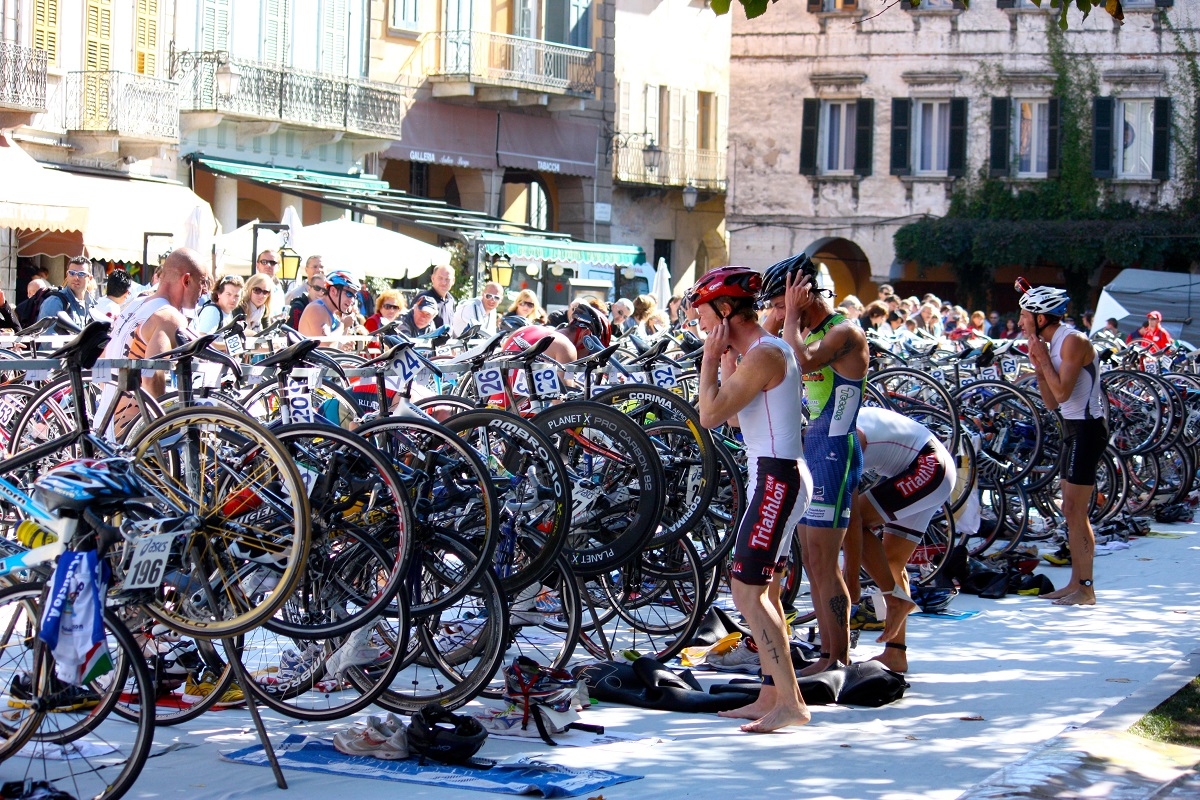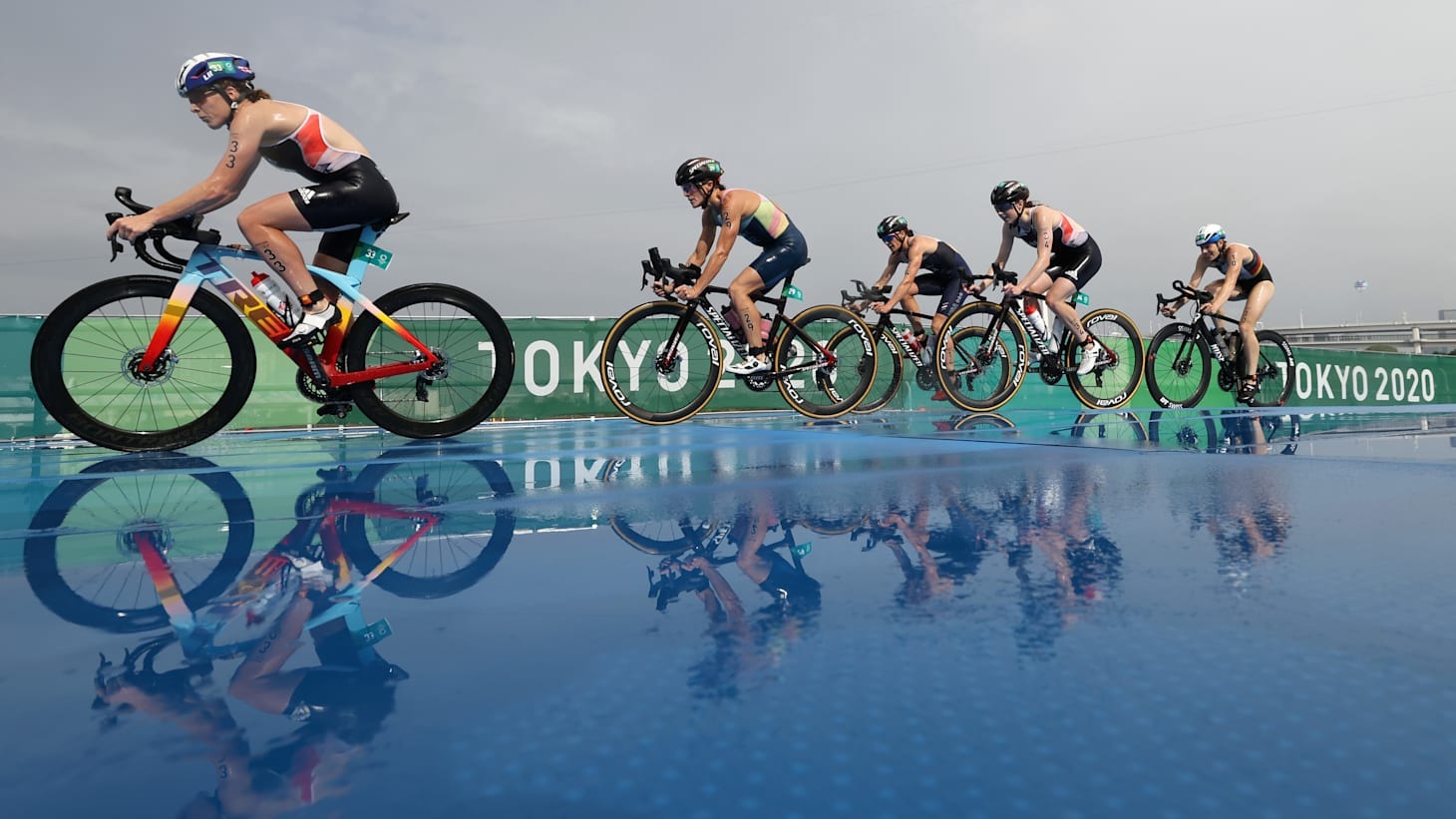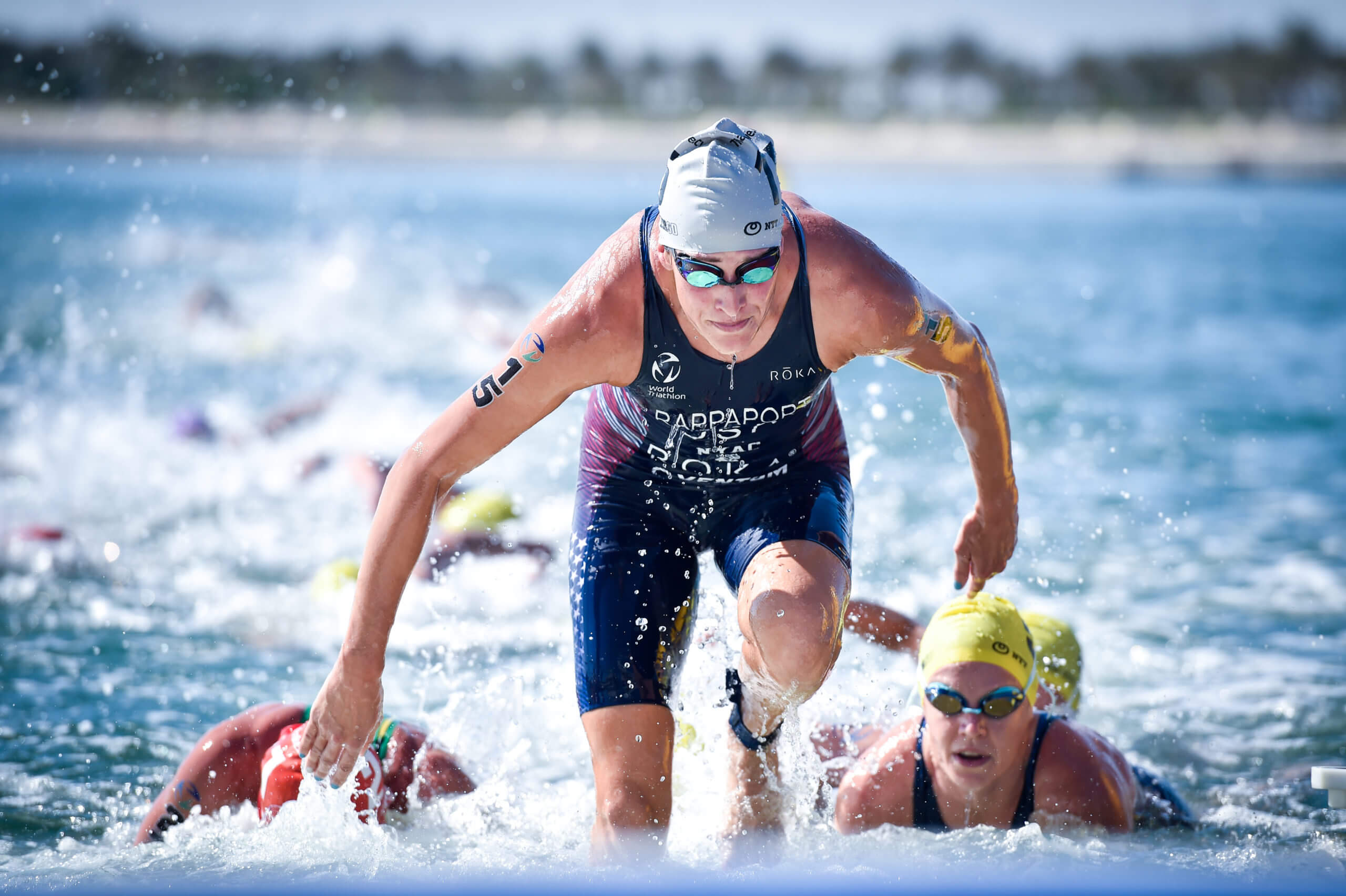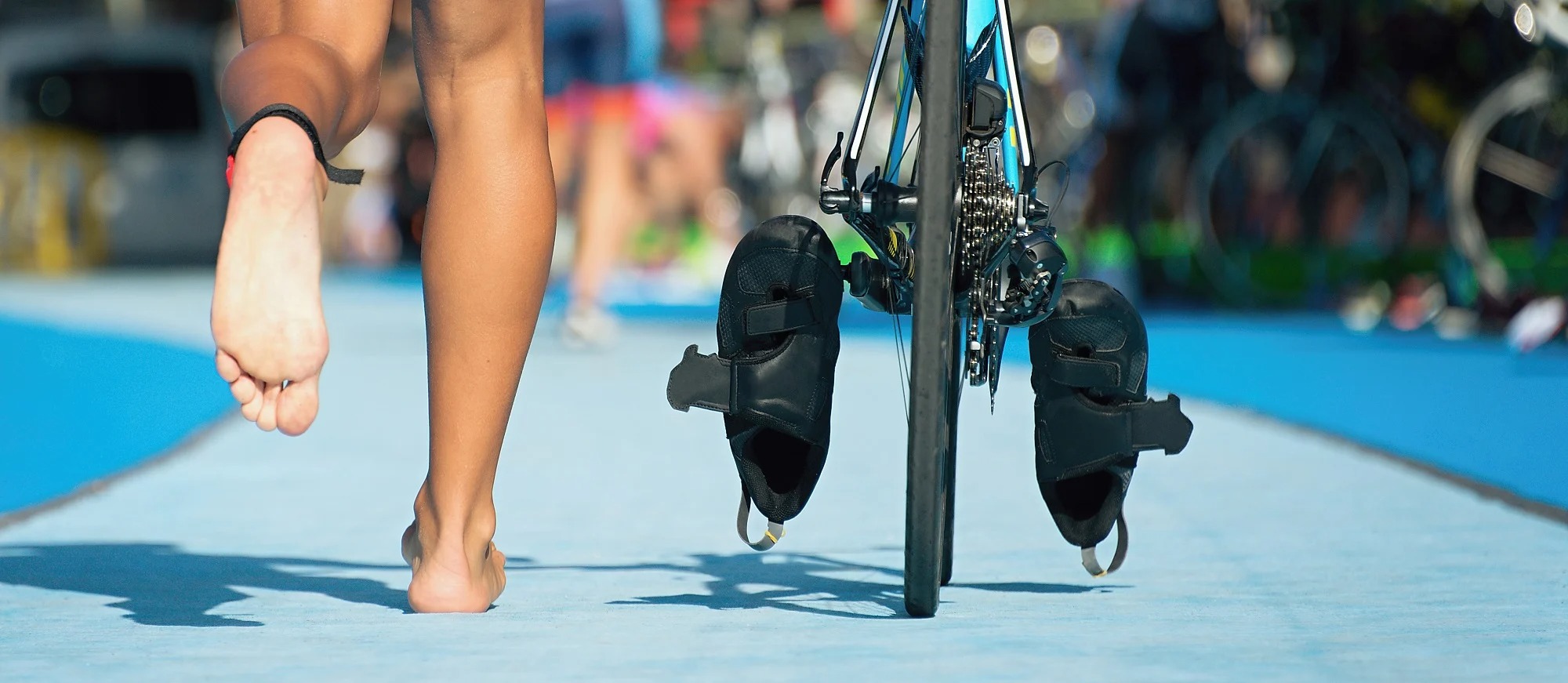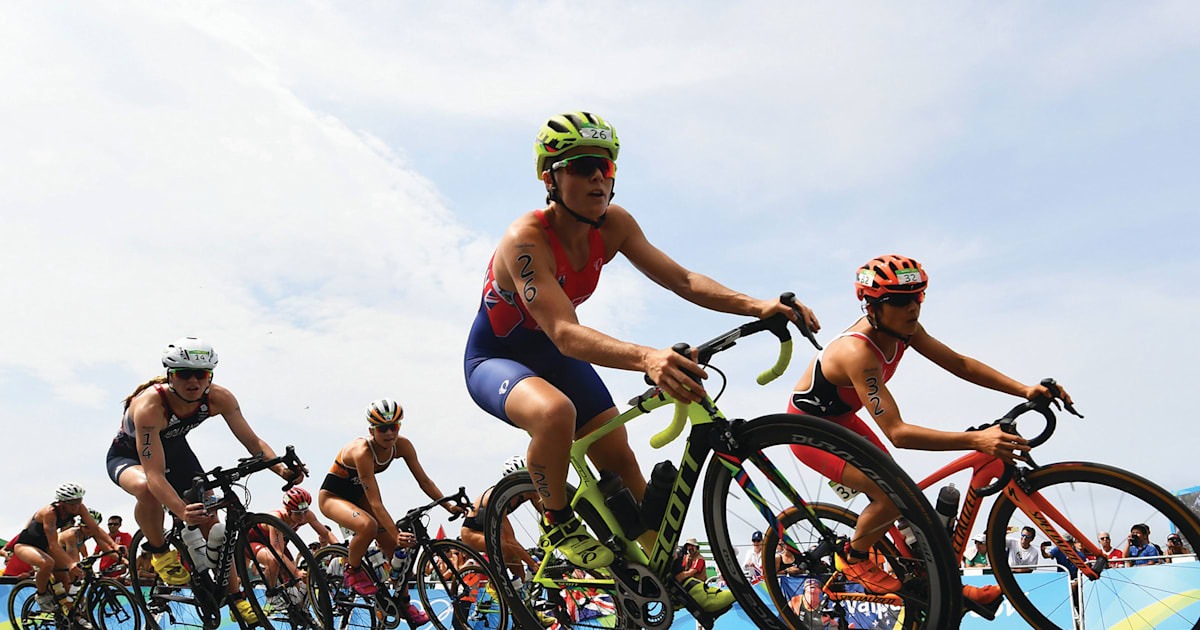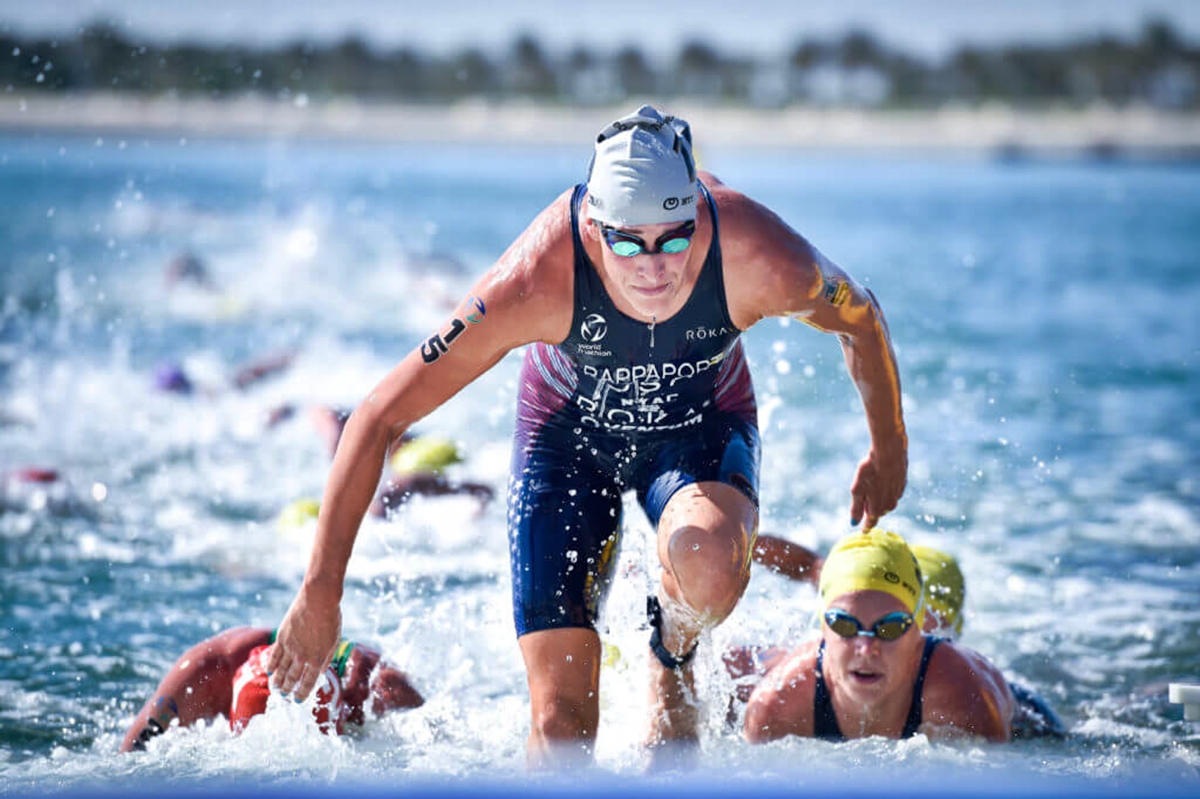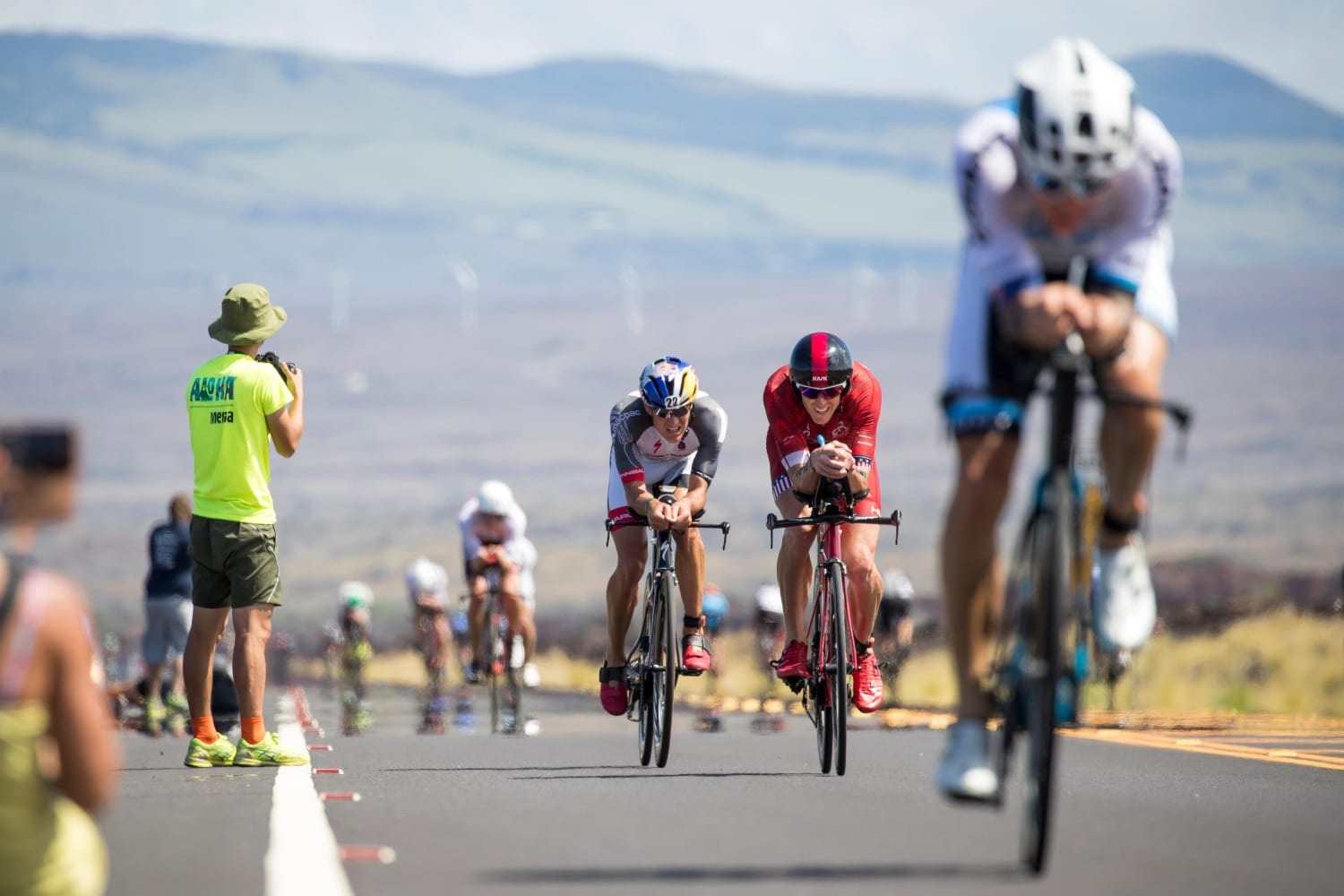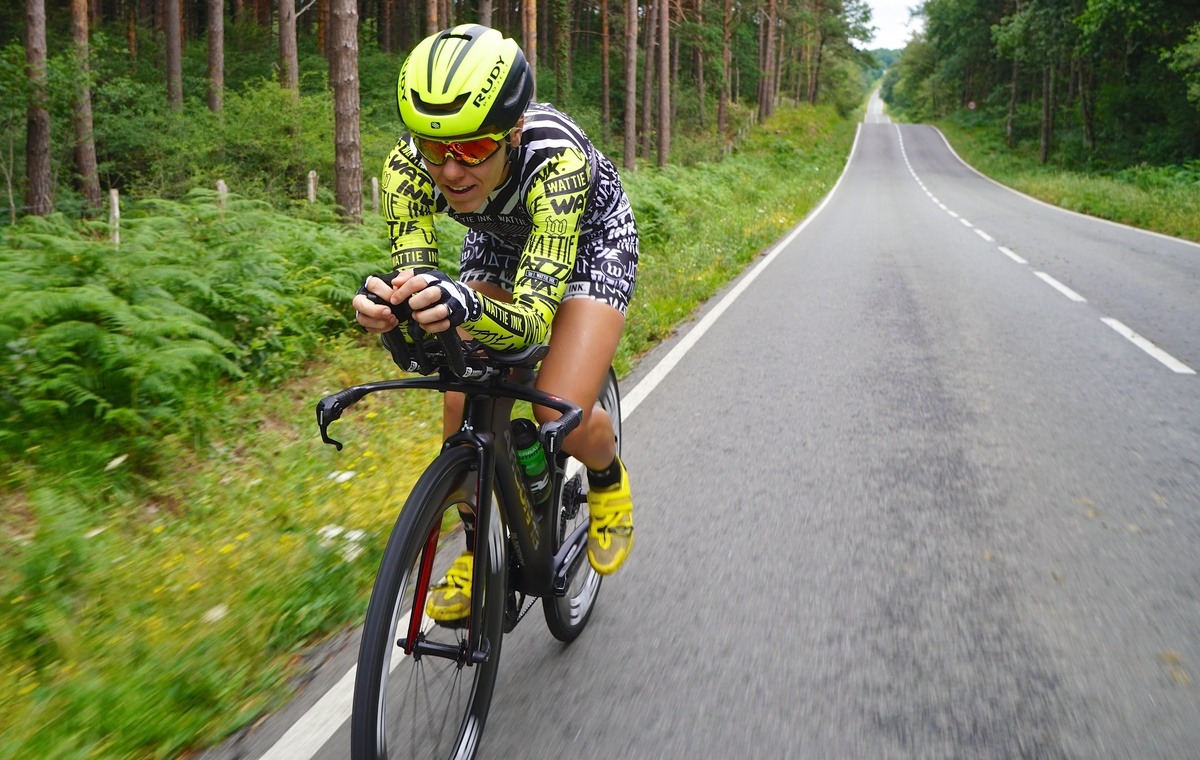Home>Misc>Featured>What Is The Difference Between Triathlon And Ironman
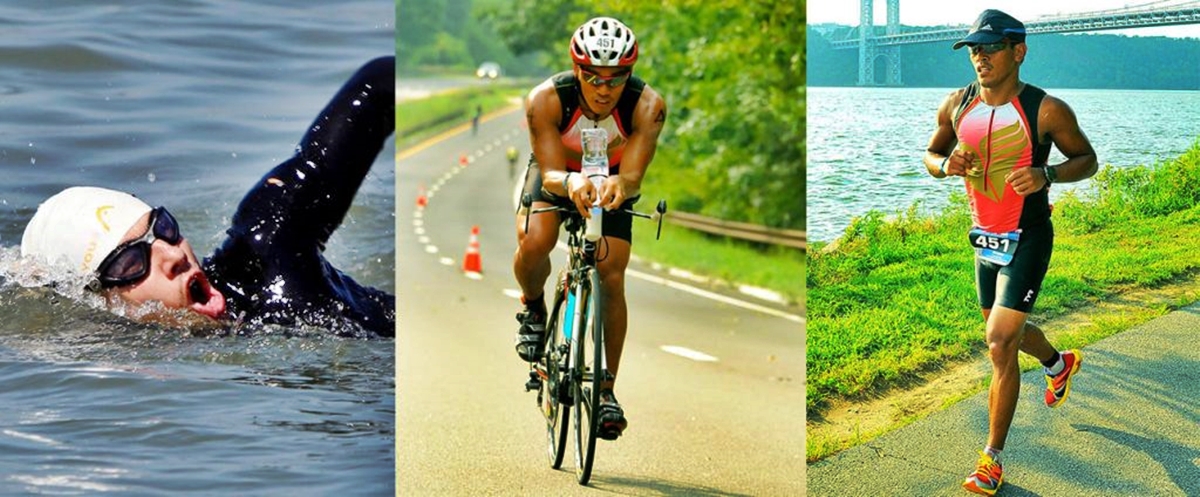

Featured
What Is The Difference Between Triathlon And Ironman
Modified: January 2, 2024
Discover the key distinctions between triathlon and Ironman competitions in this featured article. Explore the varying distances, equipment requirements, and training strategies.
Introduction
Triathlon and Ironman are two terms that are often used interchangeably in the world of endurance sports. While they are related, they actually refer to different aspects of the sport. Understanding the difference between triathlon and Ironman is essential for anyone considering participating in or following these events.
Triathlon is a multi-sport race that involves three disciplines: swimming, cycling, and running. It is a challenging test of a participant’s endurance, strength, and mental fortitude. Triathlons can vary in distance, with the most common being the sprint, Olympic, and long-course events.
On the other hand, Ironman is a specific brand and series of triathlon races that encompasses a longer distance. The Ironman race consists of a 2.4-mile swim, followed by a 112-mile bike ride, and concludes with a full marathon, which is a 26.2-mile run. Ironman races are known for their grueling nature and attract athletes from all over the world.
In this article, we will delve deeper into the differences between triathlon and Ironman. We will explore the varying distances, race formats, training required, time commitments, and goals and objectives that distinguish these two endurance sports. By understanding these differences, athletes and enthusiasts will gain a greater appreciation for the unique challenges and accomplishments associated with each.
Definition of Triathlon
Triathlon is an endurance sport that combines three different disciplines: swimming, cycling, and running. It is a challenging and physically demanding sport that tests an athlete’s fitness, endurance, and mental strength. The word “triathlon” is derived from the Greek words “tri,” meaning three, and “athlon,” meaning contest or competition.
In a triathlon, athletes compete against each other to complete all three disciplines without breaks. The order of the disciplines is typically swim, bike, and run. However, there are variations of triathlon events that may alter the sequence or distances of the disciplines.
The distances in triathlon can vary, with the most commonly recognized distances being sprint, Olympic, and long-course. A sprint triathlon typically consists of a 750-meter swim, a 20-kilometer bike ride, and a 5-kilometer run. The Olympic-distance triathlon doubles these distances, with a 1.5-kilometer swim, a 40-kilometer bike ride, and a 10-kilometer run. Long-course triathlons, also known as Ironman 70.3, involve a 1.9-kilometer swim, a 90-kilometer bike ride, and a half marathon (21.1 kilometers) run.
Triathlons can take place in various settings, including indoor pools, open water such as lakes or oceans, and on roads or designated race courses. Athletes may encounter different conditions depending on the location, such as waves, currents, hills, or varying climates. It is crucial for triathletes to adapt and prepare for these different conditions during their training.
Throughout a triathlon, athletes transition between each discipline in designated areas called transition zones. Here, they switch their equipment and gear, such as changing from a wetsuit to cycling attire or swapping running shoes. Transition times are an important aspect of a triathlon, as they can significantly impact an athlete’s overall race time.
Triathlon events can vary in terms of their scale and level of competitiveness. There are local races designed for beginners and individuals looking to challenge themselves, as well as larger, more prestigious races that attract elite athletes from around the world. No matter the level of competition, triathlon provides a unique opportunity for athletes to push their physical and mental limits and experience the thrill of completing multiple sports in a single race.
Definition of Ironman
Ironman is a specific brand and series of triathlon races that are known for their grueling distances and challenging nature. The name “Ironman” originated from a conversation between Navy Commander John Collins and his wife Judy, where she jokingly said that the winner of their friendly debate on whether swimmers, cyclists, or runners were the fittest should be titled the “Ironman.” Since then, the term has become synonymous with endurance and achievement.
The official Ironman race consists of three disciplines: a 2.4-mile (3.86 kilometers) swim, followed by a 112-mile (180.25 kilometers) bike ride, and concluding with a full marathon run of 26.2 miles (42.2 kilometers). This combination of distances tests athletes’ physical and mental strength, as they must endure several hours of continuous exertion.
The first Ironman triathlon was held in 1978 on the island of Oahu in Hawaii. It was created as a way to settle the debate on who the fittest athletes were – swimmers, cyclists, or runners. Over the years, the Ironman brand has grown in popularity and has expanded to include races held in different locations across the globe.
Ironman races attract participants from various backgrounds and skill levels, including amateur athletes, age-group competitors, and professional triathletes. While the elite athletes aim for top performances and podium finishes, many participants view completing an Ironman race as a personal challenge and an accomplishment in itself.
Ironman events are characterized by their supportive and energetic race atmosphere. Spectators line the course, cheering on athletes as they conquer each segment of the race. The determination and perseverance displayed by participants are often inspiring to both fellow athletes and spectators alike.
Becoming an Ironman is a significant achievement, not only because of the physical demands of completing the race but also due to the months of dedicated training required to prepare. Athletes must develop a comprehensive training plan that includes swimming, cycling, and running workouts, as well as strength training and recovery sessions.
Completion of an Ironman race is a testament to an athlete’s determination, discipline, and mental fortitude. Crossing the finish line after enduring the challenging distances and overcoming any obstacles along the way is a momentous achievement that is etched in the memory of every Ironman finisher.
Overview of Triathlon
Triathlon is a multi-discipline endurance sport that combines swimming, cycling, and running into a single race. It is a physically demanding sport that requires athletes to possess a strong cardiovascular system, muscular endurance, and mental resilience.
The primary goal of a triathlon is for participants to complete all three disciplines in the shortest time possible. The race begins with the swim portion, where athletes navigate through open water or swim laps in a pool. They then transition to the bike segment, where they cover a designated distance on a road bike or triathlon-specific bike. Finally, participants move on to the run, covering the designated distance on foot.
Triathlon races can vary in distance, with the most common being sprint, Olympic, and long-course events. A sprint triathlon typically involves a 750-meter swim, a 20-kilometer bike ride, and a 5-kilometer run. Olympic-distance triathlons double these distances, with a 1.5-kilometer swim, a 40-kilometer bike ride, and a 10-kilometer run. Long-course or Ironman 70.3 races consist of a 1.9-kilometer swim, a 90-kilometer bike ride, and a half marathon-distance run.
Triathlon races can take place in various settings, including open water such as lakes, rivers, or oceans, as well as in closed swimming pools. Bike segments often occur on public roads or race courses that are closed off to traffic, allowing athletes to navigate through varying terrains and elevations. Run segments can take place on roads, trails, or a combination of both.
Transition areas play a crucial role in triathlon races. These designated zones allow athletes to switch between the swim, bike, and run disciplines. Participants must efficiently transition from one activity to the next, changing gear and equipment as required. The time spent in the transition area is factored into the overall race time, so athletes strive to streamline their transitions and minimize any lost time.
Triathlon has gained popularity over the years, with events ranging from local, grassroots races to large-scale international competitions. It encourages individuals of all fitness levels to participate and provides a supportive and inclusive community for athletes. Triathlon events often foster camaraderie and a sense of achievement, as finishers are applauded for their physical feats and personal accomplishments.
Triathlon offers a unique and exhilarating experience for athletes, pushing them to their limits and challenging them to excel in multiple disciplines. The sport requires careful planning, dedicated training, and mental toughness. Crossing the finish line of a triathlon race is a moment of triumph and accomplishment, rewarding athletes for their hard work and dedication.
Overview of Ironman
Ironman is a prestigious and grueling long-distance triathlon that has become synonymous with endurance and achievement. It is a brand and series of races that encompasses a challenging course consisting of a 2.4-mile (3.86 kilometers) swim, a 112-mile (180.25 kilometers) bike ride, and a full marathon-distance run of 26.2 miles (42.2 kilometers).
Ironman races are renowned for their physical demands and rigorous nature, attracting athletes from around the world. These races push participants to their limits, testing their endurance, mental resilience, and athletic abilities over the span of several hours.
The first Ironman race took place in 1978 in Hawaii, with just 15 participants. Since then, the brand has grown and expanded, hosting races in different locations across the globe. Qualifying for the Ironman World Championship, held annually in Kona, Hawaii, is considered a pinnacle achievement for many triathletes.
Ironman events are meticulously organized and showcase the beauty of their host locations. The swim portion often takes place in open water, such as the ocean or a large lake, challenging participants with waves, currents, and varying conditions. The bike segment covers a designated distance on roads or course routes, with athletes navigating elevation changes and encountering different terrains. The final leg of the race is the marathon run, where athletes showcase their running prowess and mental strength as they conquer the 26.2-mile course.
Completing an Ironman requires months of dedicated and disciplined training. Athletes must follow a structured training plan that includes swimming, cycling, and running workouts, as well as strength and conditioning exercises. The training volume progressively increases as race day approaches to ensure participants are adequately prepared to endure the race distances and conditions.
Ironman races attract athletes of all backgrounds and skill levels, from professional triathletes to age-group competitors and first-time participants. The race atmosphere is incredibly supportive, with fellow competitors and spectators lining the course to cheer on the athletes and provide motivation during challenging moments.
The sense of accomplishment associated with finishing an Ironman is immeasurable. Crossing the finish line after enduring the demanding swim-bike-run combination is a moment of triumph and fulfillment. Participants often describe the experience as life-changing, pushing their physical and mental boundaries and proving to themselves what they are truly capable of.
Ironman events embody the spirit of determination, perseverance, and personal growth. They offer a platform for athletes to inspire and motivate others, while also fostering a sense of community and camaraderie among participants. The iconic Ironman logo is a symbol of strength and resilience, representing an achievement that showcases an individual’s unwavering dedication and passion for the sport of triathlon.
Comparison of Distances
One of the key differences between triathlon and Ironman lies in the distances covered in each race. Triathlon events offer a range of distances, including sprint, Olympic, and long-course races, while Ironman is known for its standardized, longer distances.
In a sprint triathlon, participants typically swim 750 meters, bike 20 kilometers, and run 5 kilometers. The distances are relatively short compared to other triathlon race formats, making it an accessible option for beginners or athletes looking for a shorter and faster-paced race.
The Olympic-distance triathlon, also known as the standard-distance, doubles the distance of each discipline. Participants swim 1.5 kilometers, bike 40 kilometers, and run 10 kilometers. This race format challenges athletes to build endurance and maintain a solid pace over a longer duration.
Long-course triathlons, such as Ironman 70.3, involve a 1.9-kilometer swim, a 90-kilometer bike ride, and a half marathon-distance run of 21.1 kilometers. It offers a greater test of endurance and requires participants to prepare for longer hours of physical exertion.
Ironman, the pinnacle of long-distance triathlons, features consistent distances across all races, regardless of the location. Athletes swim 2.4 miles (3.86 kilometers), bike 112 miles (180.25 kilometers), and conclude with a marathon-distance run of 26.2 miles (42.2 kilometers). The truly demanding nature of Ironman distances requires meticulous training, both physically and mentally, to successfully complete the race.
It is important to note that while the distances may be standardized in Ironman races, the course terrain, weather conditions, and other environmental factors can vary significantly depending on the race location. Athletes must adapt to these unique challenges to perform at their best.
Overall, triathlon events encompass a range of distances to accommodate athletes of different skill levels and goals. Sprint and Olympic distances provide shorter, faster options, whereas long-course and Ironman distances present a greater test of endurance. The choice of distance depends on an athlete’s personal preferences, abilities, and desired level of challenge.
Comparison of Race Format
While triathlon and Ironman share similarities in terms of their multi-discipline format, there are significant differences in their race formats that set them apart.
In a typical triathlon race, participants start with the swim segment, followed by the bike, and conclude with the run. The race order remains the same, allowing athletes to transition smoothly from one discipline to the next. Transition areas are strategically placed to facilitate this process, ensuring participants can change gear efficiently.
Triathlon races may include various types of swim starts, such as mass starts where all athletes begin the swim together, or wave starts where participants are grouped by age or skill level. This variety of starts adds an element of excitement and challenge to the race as athletes navigate through the water, jostling for position or finding their rhythm.
The bike segment in a triathlon race usually involves participants completing a set distance on a road bike or triathlon-specific bike. Athletes must adhere to traffic rules and manage varying terrains, including hills and descents. Drafting, which refers to closely following another cyclist to benefit from reduced wind resistance, is often prohibited in most triathlon races to maintain fairness.
Following the bike segment, participants transition to the run, which is the final leg of the race. The run may take place on roads, paths, or a combination of both. Participants utilize their endurance and mental strength to maintain a consistent pace and finish strong.
In contrast, Ironman races adhere to a standardized race format. The swim-bike-run order remains the same, mirroring the structure of a traditional triathlon. Ironman races are characterized by their longer distances, providing a more demanding and arduous challenge for participants.
Ironman races also have specific cutoff times established for each segment, as well as a final overall race cutoff time. Participants must complete each discipline within the designated time to continue with the race. This adds an additional layer of pressure and planning for athletes, ensuring they maintain a steady pace throughout the entire race.
Moreover, Ironman races often feature a time-trial swim start, where athletes start the swim one by one at regular intervals. This reduces congestion in the water and allows participants to swim at their own pace without interference from other swimmers.
The race atmosphere in both triathlon and Ironman events is usually lively and supportive, with spectators and supporters lining the course to cheer on the athletes. However, the larger scale and international prestige of Ironman races often lead to greater spectator turnout and a more electric race atmosphere.
Both triathlon and Ironman races offer unique challenges and rewarding experiences. The race format and structure play a significant role in providing athletes with an exhilarating and memorable event, pushing them to their limits and celebrating their achievements.
Comparison of Training
Training for triathlon and Ironman requires a dedicated and structured approach to build the necessary endurance and skill in all three disciplines. However, there are some differences in the training approaches for these two endurance sports.
In triathlon training, athletes focus on developing a balanced level of fitness in swimming, cycling, and running. The training plan typically includes specific workouts and drills for each discipline, targeting technique, speed, and endurance. Cross-training activities, such as strength training and flexibility exercises, are also incorporated to enhance overall fitness and prevent injuries.
Since triathlon distances vary, training plans can be customized based on the target race distance. Sprint-distance training may emphasize speed and short bursts of intense effort, while long-course training requires building endurance and the ability to sustain steady effort for extended periods.
In Ironman training, the focus shifts to longer and more intense workouts to prepare for the increased demands of the race. Athletes must develop the physical and mental resilience to endure hours of continuous swimming, cycling, and running. Long-distance bike rides, runs, and swim sets become a regular part of the training routine.
The volume of training in Ironman preparation is significantly higher compared to shorter distance triathlon training. Participants must gradually increase their weekly training load, allowing their bodies to adapt to the physical demands and prevent overuse injuries. Recovery and rest days are crucial to avoid burnout and ensure optimal performance.
Nutrition and fueling strategies play a vital role in both triathlon and Ironman training. Athletes must focus on consuming adequate calories, carbohydrates, protein, and hydration to support their training volume and optimize performance on race day.
Triathlon and Ironman training also require athletes to practice transitions between disciplines to ensure they can efficiently switch gear and equipment during the race. Transition workouts are incorporated into training plans to improve speed and fluidity during the transitions.
A significant aspect of training for both triathlon and Ironman is the inclusion of brick workouts. These workouts involve combining two disciplines consecutively, such as a swim immediately followed by a bike ride, or a bike ride followed by a run. Brick workouts help athletes adapt to the muscular and physiological challenges of transitioning between disciplines.
Coaching and joining local training groups or clubs are beneficial for athletes in both triathlon and Ironman training. They provide guidance, structured training plans, and support networks to help athletes reach their goals. Additionally, these communities offer camaraderie, motivation, and mentorship from more experienced athletes.
Regardless of the distance or race format, training for triathlon and Ironman requires discipline, commitment, and consistent effort. Athletes must be willing to push their limits and continually challenge themselves to improve their performance and achieve their race day goals.
Comparison of Time Commitment
Participating in triathlon and Ironman events requires a significant time commitment for training and preparation. The amount of time invested in each sport can vary depending on the distance of the race and the athlete’s personal goals and abilities.
In general, triathlon training requires a substantial time commitment, especially for athletes aiming to compete at higher levels. Training plans typically consist of multiple workouts per week, incorporating swim sessions, cycling rides, and running sessions. Each session can range from 30 minutes to several hours, depending on the athlete’s fitness level and goals.
The time commitment for triathlon training varies based on the race distance. Sprint-distance triathlons typically require less training time, with athletes dedicating around 5-8 hours per week to training. Olympic-distance triathlons may require 8-12 hours per week of training, including longer endurance workouts. Long-course triathlons, such as Ironman 70.3, demand a higher time commitment, often ranging from 12-20+ hours per week, due to the longer distances involved.
Ironman training, on the other hand, necessitates a significant time investment due to the demanding race distances. Athletes training for an Ironman race often spend 15-25+ hours per week training, with peak training weeks sometimes exceeding 30 hours. These long training sessions encompass swimming, biking, running, and strength training to build the necessary endurance and resilience for the race.
Time commitment in Ironman training not only includes the physical training but also factors in recovery time, rest days, and active recovery exercises. Recovery is an essential component to prevent overtraining and injuries, allowing the body to adapt and rebuild muscle strength.
Balancing the time commitment of triathlon and Ironman training with other responsibilities and commitments can be a challenge. Athletes must carefully manage their schedules, prioritize their training, and make sacrifices in other areas of their lives to accommodate the required training hours.
Additionally, time commitment can vary depending on an individual’s fitness level, experience, and personal goals. Elite and professional athletes may dedicate more time to training, while recreational athletes with busy schedules may have to optimize their training efficiency within limited time windows.
The time commitment also extends to race day itself. Triathlon events can span several hours, with athletes aiming to complete the race in the shortest time possible. Ironman races can last anywhere from 8 to 17 hours or more, depending on the athlete’s performance and the specific course.
Regardless of the time commitment, both triathlon and Ironman allow individuals to challenge themselves physically and mentally, pushing their limits and achieving personal growth. The dedication and perseverance required to balance training and other commitments demonstrate a commitment to the sport and a desire to excel.
Comparison of Goals and Objectives
Triathlon and Ironman athletes set various goals and objectives to guide their training and race performances. These goals can range from personal achievements to competitive aspirations, and they often differ depending on the distance and individual preferences.
For many triathlon participants, the primary goal is to complete the race and challenge themselves both physically and mentally. This could involve conquering a specific race distance for the first time or pushing their limits by completing a longer distance than they have before. The sense of accomplishment and personal fulfillment derived from crossing the finish line is a common objective in triathlon.
Competitiveness is another important aspect of triathlon goals and objectives. Triathletes may aim to improve their overall race time, achieve a personal best, or place within their age group. The desire to challenge and outperform oneself motivates athletes to consistently train, refine their techniques, and push their athletic limits.
In Ironman, goals and objectives often revolve around the completion of one of the hardest and most demanding endurance races. For many Ironman participants, the goal is to simply finish the race within the established cutoff times. The immense physical and mental challenges associated with an Ironman race make completing it an extraordinary accomplishment.
Additionally, Ironman athletes may set specific time goals, aiming to complete the race within a certain timeframe. This objective requires meticulous training, pacing, and strategy throughout the race. Some participants may compete for podium finishes and age-group awards, seeking recognition and validation for their performance and dedication.
Beyond personal goals, both triathlon and Ironman races provide a platform for athletes to raise awareness and contribute to charitable causes. Many participants use their race participation as an opportunity to fundraise for nonprofit organizations close to their hearts. Integrating the goal of making a positive impact on society adds an altruistic aspect to their race objectives.
Furthermore, goals and objectives can evolve as athletes gain experience and confidence in the sport. Some triathletes may transition from shorter distance races to longer distances, progressively pushing their limits and striving for new challenges.
Regardless of the specific goals and objectives set, both triathlon and Ironman encompass a journey of personal growth, perseverance, and accomplishment. The dedication required to pursue these goals extends beyond the race day itself, shaping an athlete’s mindset and fostering a lifelong commitment to health, fitness, and achievement.
Conclusion
Taking part in triathlon or Ironman events requires a passion for endurance sports, a commitment to training, and a desire to push one’s limits. While these two pursuits share similarities in their multi-discipline format, they also have distinct differences that set them apart.
Triathlon combines swimming, cycling, and running into a race that offers various distances to accommodate athletes of different skill levels. The sport provides opportunities for personal growth, competition, and a sense of accomplishment. Triathlon events foster a supportive community and a challenging environment where athletes can test their physical and mental capabilities.
On the other hand, Ironman represents the pinnacle of long-distance triathlon races. It brings together the endurance challenges of a 2.4-mile swim, a 112-mile bike ride, and a full marathon run. Ironman events attract athletes looking to push their boundaries and achieve a remarkable accomplishment. The training demands and time commitment for Ironman races are significantly higher than traditional triathlons, requiring athletes to prioritize and dedicate themselves to extensive preparation.
Throughout the comparison of triathlon and Ironman, it is evident that both sports offer unique and rewarding experiences. Athletes choose their pursuit based on their personal goals, abilities, and desires for challenge and achievement. Whether aiming to complete a sprint triathlon, set a new Ironman personal record, or simply cross the finish line in the most demanding race of their lives, participants demonstrate their commitment to pushing their limits and embracing the journey of endurance athletics.
No matter which path athletes choose to embark on, triathlon and Ironman provide opportunities to foster physical fitness, mental resilience, and personal growth. These sports celebrate the human spirit of determination, tenacity, and the pursuit of excellence. Whether participating as a recreational athlete or a seasoned competitor, engaging in triathlon or Ironman is an extraordinary endeavor that leaves a lasting impact on the individuals who dare to take on the challenge.
